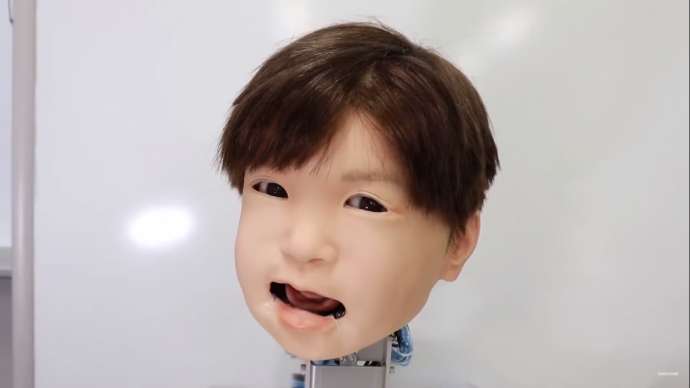Časoris is an online newspaper aimed at children. Each week we’ll take an article and post it here as a Slovene-English dual text.
Ali roboti postajajo ljudje?
Are robots becoming humans?
Written by Dora Adamič, translated by JL Flanner & G Translate
Roboti nam postajajo čedalje bolj podobni! Lahko čutijo bolečino in predvidevajo dejanja robota ob sebi.
Robots are becoming more and more like us! They can feel pain and anticipate the actions of the robot next to them.
Na Univerzi Columbia je znanstvena skupina ustvarila robota, ki čuti empatijo in lahko predvideva dejanja drugega robota.
At Columbia University, a scientific team has created a robot that senses empathy and can predict the actions of another robot.
Večina ljudi sicer to počne ves čas. Ko osebo bolje poznamo, lahko predvidevamo njena dejanja in odzive, kar nam pogosto olajša skupno življenje.
Most people do this all the time. When we know a person better, we can anticipate his actions and reactions, which often makes life easier for us.
Zato so raziskovalci pripravili poskus, pri katerem so enemu robotu na različna mesta postavljali zeleno piko, proti kateri se je moral premakniti. Pri tem so mu lahko postavili tudi oviro, da pike ni mogel videti.
Therefore, the researchers prepared an experiment in which they placed a green dot in different places, which a robot had to move towards. They were also able to put an obstacle in his way so that he could not see the dot.
S ptičje perspektive je dogajanje prek kamere opazoval inteligenten robot, ki z njim ni komuniciral.
From a bird's eye view, the events were observed via a camera by an intelligent robot who did not communicate with him [the other robot].
Ta ni vedel, kaj pomeni zelena pika in kaj ovire na robotovi poti. Kljub temu je sčasoma začel sklepati, kam robot želi iti in kaj je njegov cilj.
He [the intelligent robot] didn't know what the green dot meant and what the obstacles in the robot's path were. Nevertheless, he eventually began to infer where the robot wanted to go and what his goal was.
Opazovalni robot je lahko celo predvidel, da se robot ne bo premaknil proti zeleni piki, če je zaradi ovire ne bo videl.
The observation robot could even predict that the robot would not move toward the green dot if it could not see it due to an obstacle.
»Roboti verjetno ne bodo več dolgo naprave, ki samo sledijo navodilom,« meni vodja študije profesor Hod Lipson.
"Robots are unlikely to be devices that just follow instructions for much longer," said study leader Professor Hod Lipson.
Do podobnega zaključka kot Lipson so prišli tudi raziskovalci na univerzi na Japonskem. Naredili so robota, občutljivega za bolečino, ki lahko svoja čustva pokaže na obrazu.
Researchers at a university in Japan came to a similar conclusion as Lipson. They made a pain-sensitive robot that can show its emotions on its face.
Robota z otroškim obrazom so prekrili z umetno kožo in mu dodali čutilni sistem za bolečino.
The robot with a child's face was covered with artificial skin and a sensory system for pain was added to it.
Ob različnih dotikih so se njegovi izrazi na obrazu spreminjali. Ko je na koži začutil bolečino, se je celo skremžil.
The expressions on his face changed with different kinds of touch. When he felt pain in his skin, he even cringed.
Takšni preboji pri razvoju robotov bodo nekega dne pripomogli k izdelavi realističnih robotov, ki bodo razumeli naša čustva, predvidevali naša dejanja in bodo lahko tudi bolje skrbeli za nas.
Such breakthroughs in robot development will one day help to create realistic robots that will understand our emotions, anticipate our actions, and also be able to take better care of us.
Read more stories and improve your Slovene at Časoris, while all our dual texts can be found here.







